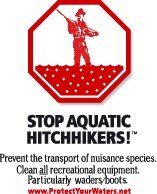PART OF A MISSPENT YOUTH
 .. The Yellowstone National Park Web Page continues to grow. It's a bit less user friendly now. However, since the revamped site was brought into line with the rest of the NPS sites, (well most of them,) there have been additions of at least 2,000 new slides and the publication of on-line resources, including Yellowstone National Park Its Exploration and Establishment by Aubrey L. Haines.
.. The Yellowstone National Park Web Page continues to grow. It's a bit less user friendly now. However, since the revamped site was brought into line with the rest of the NPS sites, (well most of them,) there have been additions of at least 2,000 new slides and the publication of on-line resources, including Yellowstone National Park Its Exploration and Establishment by Aubrey L. Haines.------------------------
.. The early years of Yellowstone National Park saw an attitude of exploitation and sporting hedonism prevail. The park was the playground of those who could afford a train ride, a guided tour, and lodgings in grand, (and not-so-grand,) hotels... Hunting was allowed, and fishing encouraged - nay, even exploited by commercial fishing operations.:
.. In 1889, the United States Fish Commission began fieldwork in Yellowstone. A fish cultural station was in operation on Yellowstone Lake ten years later. "It was the beginning of a gigantic hatchery operation that in the next fifty seven years would yield 818 million trout eggs for use in other waters (mostly outside Yellowstone.)" In 1911, the Yellowstone Park Lake Station was made a substation of the Federal hatchery at Bozeman, Montana.When Yellowstone National Park was created about 40% of its waters were barren of fish. Park administrators early expressed an interest in developing these areas for additional sport. Until 1883, both hunting and fishing were allowed in Yellowstone as the only practical way to feed visitors evolving from a frontier subsistence policy. By the early 1880s there were enough hotels and restaurants to allow a ban on hunting. At the same time, fishing was restricted to sportsmen and a few commercial enterprises who supplied the hotels. This continued until 1917.
.. Facilities were primitive in those days. The fish hatching ponds were wooden troughs outside. These were consistently damaged by bears and the eggs destroyed. A permanent two story log hatchery building and another log building were constructed on hatchery Creek near the Lake Hotel in 1912, along with a collecting station at Clear Creek in 1913. The Columbine Creek collecting station was built in 1914 and a cottage for the superintendent a few years later. These buildings no longer exist.
.. As early as 1920, the Annual Report of the Director of the National Parks indicated the Lake Hatchery was replenishing the depleted fish supply in the National Park Service. In 1922, the scale of the operations was increased with a new hatchery being established at Fish Lake. The annual report for that year proposed "...that a Federal hatchery be established in other national parks whenever that is feasible."
.. This philosophy of using artificial means to replenish the fish of the National Park System waters was soon to be abandoned. The old U.S. Fish Commission had been combined with the Bureau of Sport Fisheries and Wildlife to form the U.S. Fish and Wildlife Service.
 "While on the one hand the National Park Service was suppose to be preserving native fish populations, on the other hand the U.S. Fish and Wildlife Service was supposed to mass produce trout."
"While on the one hand the National Park Service was suppose to be preserving native fish populations, on the other hand the U.S. Fish and Wildlife Service was supposed to mass produce trout.".. The tension grew between the Fish and Wildlife Service and park managers. In 1957, the hatcheries were shut down. The U.S. Fish and Wildlife Service personnel shifted their attention to research. In 1958, the artificial propagation of fish at Lake was halted and the catch limited to a figure within the natural regenerative powers of the species. In 1996 the National Park Service assumed responsibility for managing the park's fishery program. {excerpt from YELLOWSTONE HISTORY}
 .. Additionally, there were railroad cars and boats used specifically for the fish planting and moving operations. The USFWS discovered "U.S. Fisheries # 40" in 1980 and had it restored. They have also restored some railroad cars that were used to transport across the country.
.. Additionally, there were railroad cars and boats used specifically for the fish planting and moving operations. The USFWS discovered "U.S. Fisheries # 40" in 1980 and had it restored. They have also restored some railroad cars that were used to transport across the country.The first experimental transport of fish by rail from the east coast to the west was conducted by Dr. Livingston Stone of the U.S. Fish Commission in 1873. In charge of 35,000 shad fry carried in open milk cans, Dr. Stone changed the water every two hours where possible in order to deliver this shipment safe and sound for planting in California. By 1879, due to this first demonstration, fish were being successfully shepherded by railcar across the nation.

THE GOOD LIFE
nps photo
--------------------------------------------------
--------------------------------------------------




.jpg)






